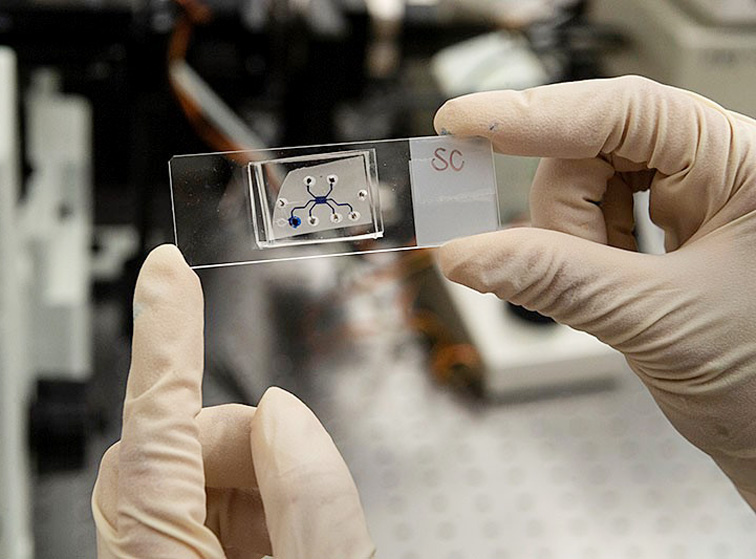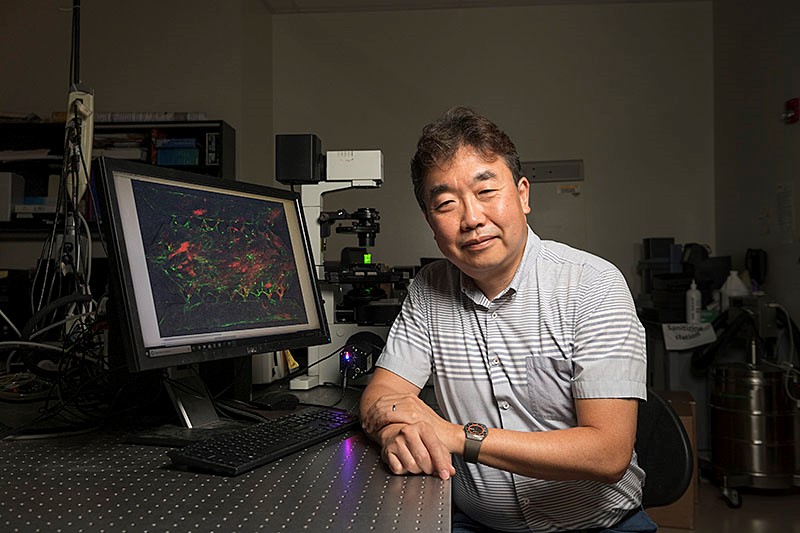 A new approach, dubbed a ‘time machine’ made of cells, can reverse the course of cancer cells before they reach the pancreas.
A new approach, dubbed a ‘time machine’ made of cells, can reverse the course of cancer cells before they reach the pancreas.
An innovative bio-engineering approach has developed a life-like structure of the pancreatic acinus, a cellular structure that produces digestive enzymes. Malfunction of this structure has been linked to conditions like pancreatitis and pancreatic cancer.
Now, a new study shows that a lab-made pancreatic acinus can reprogram cells that have become cancerous, turning them into normal pancreatic cells. The innovative model, called a pancreatic acinus-on-chip or PAC is made of pancreatic cells genetically reprogrammed to revert to a normal state.
“These findings open up the possibility of designing a new gene therapy or drug because now we can convert cancerous cells back into their normal state,” said lead researcher Prof Bumsoo Han, from the Purdue Center for Cancer Research, in the USA, in a press release.
Pancreatic cancer is a hard to treat and deadly condition that affects more than 4,000 Australians each year. The survival rate for this cancer is around 11% in Australia, hinting at the need to find new and more effective ways to manage the condition.
An innovative approach
Most research studies testing new therapies start off with animal models, to test the safety and efficacy of a new treatment. However, this is a lengthy process for pancreatic cancer research, as it can take months for the cancer to develop in animal models.
To address this issue Prof Han and his team developed a realistic model, using human pancreatic cancer cells. Through multidisciplinary collaborations, involving engineers, biologists and cancer researchers, this 3-D model of the acinus realistically represents the anatomical complexity of the pancreatic acinus. “From an engineering perspective, creating this kind of three-dimensional cavity is not trivial. So, figuring out a way to build this cavity is an innovation in itself,” Prof Han said.
The accurate design of this lab-made acinus is just half of the story. Researchers led by co-leader of the project, Prof Stephen Konieczny, also from Purdue University, created the PAC model using genetically engineered cells that can express a key gene in pancreas development, called PTF1a.
Pancreatic cancer cells normally have this gene turned off, and in this new pancreatic acinus model, the PTF1 gene was engineered to become active in the presence of a certain chemical. When researchers grow cancerous human cells into the PAC and their PTF1a gene became active, the cells were no longer cancerous. Instead, they started behaving like normal pancreatic cells. This meant that the added cancerous cells had been re-programmed and where no longer cancerous.
“In this model, not only do the cancerous cells become reprogrammed, but for the first time, we’re able to show the normal three-dimensional architecture of the acinus, which looks very similar to the same structures we see in a healthy pancreas,” Prof Konieczny said.
Further research is needed to take these findings from the lab bench to the bedside, but the findings are promising.


